safflower
[Medicinal Use] The tubular inflorescence of Carthamustinctorius L., a herbal plant of the Asteraceae family.
[Nature, flavor and meridians] Pungent and warm. Returns to liver and heart meridian.
[Efficacy] Promoting blood circulation and removing blood stasis
[Clinical Application] 1. Used for lumps in the mass, sores and carbuncles, pain due to falls, rheumatic arthralgia, irregular menstruation, amenorrhea, abdominal pain, and postpartum stasis and pain.
Safflower Xin Powder is used less for promoting blood circulation and more for removing blood stasis. It is an important medicine for treating stagnation caused by blood stasis, and is especially commonly used by women. In terms of compatibility, this product is usually used with peach kernels. Angelicae, Chuanxiong, peony, etc. are used for promoting blood circulation; Trigonellae, Curcuma, rhubarb, wormwood, etc. are used for removing blood stasis.
2. Used for dark spots.
This product can also be used to treat measles that come back, or when heat stagnates and blood stagnates, and the macules are dull and red in color. Use it to activate blood circulation and remove blood stasis to resolve stagnation. It can be used with angelica, Lithospermum, Daqingye, etc. to promote blood circulation, cool blood, and relieve heat. Compatibility of detoxification products.
In addition, in recent years, this product has been used to treat coronary heart disease and angina pectoris, often with Salvia miltiorrhiza, Chuanxiong, and red peony root; for thromboangiitis obliterans, it has been used with Angelica sinensis, peach kernel, red peony root, and frankincense.
[Prescription name] Safflower Duhonghua (for sun-drying)
[General dosage and usage] 1 to 3 qian, decoct and take. It should not be used by pregnant women due to heavy menstruation.
[Additional medicine] Saffron: also known as saffron. and the dried stigmas of crocus, an herbaceous plant of the Iridaceae family. Sweet in nature and flavor, cold. The efficacy is similar to that of safflower, and the clinical application is basically the same. It also has the effect of cooling blood and detoxifying. It can be used for febrile diseases such as heat entering the blood and spotty fever. The general dosage is 3 to 1 penny, decoction and taken. Because this product is scarce and expensive, it is rarely used clinically.
[Examples of prescriptions] Safflower decoction (“Hua Fa Confidential”) contains safflower, dried lotus leaves, peony bark, angelica root, and cattail. It can be used to treat amenorrhea, abdominal pain, and postpartum blood stasis and blood dizziness.
Angelica and Honghua Drink (“Ma Ke Living Encyclopedia”) contains angelica, safflower, burdock, forsythia, kudzu root and licorice. It is used to treat cases where the rash breaks out and then relapses, or when heat stagnates and blood stagnates, and the rash is dark in color.
This product is the dried flower of Carthamus tinctoriusL, a plant in the Asteraceae family. Pick the flowers when they turn from yellow to red in summer and dry them in the shade or sun.
【Karaktär】
This product is a tubular flower without ovary, 1~2cm long. The surface is reddish yellow or red. The corolla tube is slender, with 5 lobes at the apex, and the lobes are narrow strips, 5~8mm long; the stamens are 5, and the anthers are aggregated into a tube shape, yellowish white; the stigma is long cylindrical, and the top is slightly bifurcated. Soft texture. The smell is slightly fragrant and the taste is slightly bitter.
【Identifiering】
(1) The powder of this product is not orange-yellow. Corollas, filaments, and stigma fragments are common. Long tubular secretory cells are often located next to the ducts, with a diameter of about 66um and containing yellow-brown to red-brown secretions. The outer wall protrusions of the epidermal cells at the top of the corolla lobes are short villi-like. Epidermal cells on the stigma and upper part of the style differentiate into conical single-cell hairs with pointed or slightly blunt apex. Pollen grains are round, oval or olive-shaped, about 60um in diameter, with 3 germination pores and tooth-like protrusions on the outer wall. Calcium oxalate cubic crystals exist in parenchyma cells with a diameter of 2~6um.
(2) Take 0.5g of this product powder, add 5m| of 80% acetone solution, seal tightly, shake for 15 minutes, let it stand, and take the supernatant as the test solution. Take another 0.5g of the safflower control medicinal material and prepare the reference medicinal material solution in the same way. According to the thin layer chromatography (General Chapter 0502) test, absorb 5 pieces of each of the above two solutions and spot them on the same silica gel H thin layer plate. Use ethyl acetate-formic acid-water-methanol (7:2:3:0.4) as the Spread the developing agent, take it out and let it dry. In the chromatogram of the test product, spots of the same color appear at the positions corresponding to the chromatogram of the control medicinal material.
【undersöka】
Impurities must not exceed 2% (General Rule 2301).
Moisture content must not exceed 13.0% (General Rule 0832 Second Method).
The total ash content shall not exceed 15.0% (General Rule 2302)
Acid-insoluble ash shall not exceed 5.0% (General Chapter 2302).
Absorbance red pigment: Take this product, dry it in a silica gel desiccator for 24 hours, grind it into fine powder, take about 0.25g, weigh it accurately, put it in a conical flask, add 50ml of 80% acetone solution, connect the condenser, and place it at 50℃ Soak in a water bath for 90 minutes, let cool, filter with a No. 3 fused glass funnel, collect the filtrate in a 100ml measuring bottle, wash it in batches with 25ml of 80% acetone solution, add the washing liquid into the measuring bottle, add 80% acetone Bring the solution to the mark, shake well, and measure the absorbance at a wavelength of 518 nm using UV-visible spectrophotometry (General Chapter 0401), which shall not be less than 0.20
【Extrahera】
According to the cold soak method under the determination of water-soluble leachables (General Chapter 2201), it shall not be less than 30.0%. 【Content determination】
Hydroxysafflor yellow A was determined according to high performance liquid chromatography (General Chapter 0512)
Chromatographic conditions and system suitability test: Use octadecylcupane bonded gum as the filler; use methanol-acetonitrile-0.7% phosphoric acid solution (26:2:72) as the mobile phase: the detection wavelength is 403nm. The number of theoretical plates calculated based on the peak of hydroxysafflor yellow A should not be less than 3000.
Preparation of reference substance solution: Take an appropriate amount of hydroxysafflor yellow A reference substance, weigh it accurately, add 25% methanol to prepare a solution containing 0.13mg per 1ml, and you have it.
Preparation of test solution: Take about 0.4g of this product powder (passed through No. 3 sieve), weigh it accurately, place it in a stoppered Erlenmeyer flask, add 50ml of 25% methanol accurately, weigh it, and conduct ultrasonic treatment (power 300W, frequency 50kHz) for 40 minutes, let cool, weigh again, make up for the lost weight with 25% methanol, shake well, filter, and take the remaining filtrate to get it.
Determination method: Precisely absorb 10m each of the reference solution and the test solution, inject them into the liquid chromatograph, and measure.
Calculated as a dry product, this product contains not less than 1.0% of hydroxysafflor yellow A (C27H32016).
Kaempferol was determined according to high performance liquid chromatography (General Chapter 0512).
Chromatographic conditions and system suitability test: Use octadecylcupane bonded gum as the filler: methanol-0.4% phosphoric acid solution (52:48) as the mobile phase; the detection wavelength is 367nm. The number of theoretical plates should not be less than 3000 based on the kaempferol peak.
Preparation of reference substance solution: Take an appropriate amount of kaempferol reference substance, weigh it accurately, add methanol to make a solution containing 9ug per 1ml, and you have it.
Preparation of test solution: Take about 0.5g of this product powder (passed through No. 3 sieve), weigh it accurately, place it in a stoppered conical flask, add 25m of methanol accurately, weigh it, heat to reflux for 30 minutes, let cool, and then Weigh the weight, make up for the lost weight with methanol, shake well, filter, accurately measure 15ml of the additional filtrate, put it in a flat-bottomed flask, add 5ml of hydrochloric acid solution (15-37), shake well, and heat and hydrolyze in a water bath for 30 minutes. Cool immediately, transfer to a 25ml measuring flask, dilute to the mark with methanol, shake, filter, and take the filtrate to obtain.
For the determination method, accurately draw 10u each of the reference solution and the test solution, inject them into the liquid chromatograph, and measure.
Calculated as dry product, this product contains no less than 0.050% kaempferol (C15H1006).
Dricksbitar
[Processed]
Remove impurities.
[Karaktär][Identifiering][Inspektion][Lakevatten][Bestämning av innehåll]
Samma läkemedelsmaterial.
【Natur, smak och meridiantropism】
Pungent, warm. Guixin, liver meridian.
[Funktioner och indikationer]
Promotes blood circulation and stimulates menstruation, dissipates inflammation and relieves pain. Used for amenorrhea, dysmenorrhea, lochia, fatigue, lumps, chest pain, abdominal pain, stabbing pain in the chest and hypochondrium, injuries from falls, sores, swelling and pain
【Användning och dosering】
3~10g.
【Notice】
Pregnant women should use with caution.
【Lagring】
Store in a cool, dry place away from moisture and moth.
Where are the main origins of safflower?
Mainly produced in Henan, Xinjiang and Sichuan.
Where are the main medicinal parts of safflower?
Medicinal parts of safflower:
The dried flowers of the red flower Carthamus tinctoriusL. of the Asteraceae plant. Pick the flowers when they turn from yellow to red in summer and dry them in the shade or sun.
Characteristics of the medicinal parts of safflower:
This product is a tubular flower without ovary, 1~2cm long. The surface is reddish yellow or red. The corolla tube is slender, with 5 lobes at the apex, and the lobes are narrow strips, 5~8mm long; the stamens are 5, and the anthers are aggregated into a tube shape, yellowish white; the stigma is long cylindrical, and the top is slightly bifurcated. Soft texture. The smell is slightly fragrant and the taste is slightly bitter.
How are safflowers recorded in ancient historical books?
“Kaibao Materia Medica”: “It is mainly used for postpartum haemorrhage, mutilation of the mouth, persistent bad blood in the abdomen, colic, fetal death, boiled with wine and taken. It is also used for bleeding due to poison.”
“Compendium of Materia Medica”: “Activates blood circulation and moisturizes dryness, relieves pain, disperses swelling, and stimulates menstruation.”
Funktion och effekt
Safflower has the effects of activating blood circulation, promoting menstruation, dispersing blood stasis and relieving pain.
What are the main functions and clinical applications of safflower?
Safflower is used for amenorrhea, dysmenorrhea, lochia, fatigue and lumps, chest pain and heartache, blood stasis and abdominal pain, stabbing pain in the chest and flanks, injuries from falls, sores and swelling and pain.
·Blood stasis syndrome: To treat amenorrhea and dysmenorrhea, it can be decoctioned with wine alone, or used together with angelica and hematoxylin.
To treat hematuria scars in women, it is often used with rhubarb and horseflies.
To treat chest pain and heartache, it is often used with Salvia miltiorrhiza, Chuanqiong, and Jiangxiang.
To treat bruises and bruises, muscle and bone stasis and pain, it can be used equally with Angelica sinensis, Araceae, and Angelica dahurica.
To treat sores, swelling and pain, it can be used equally with Forsythia suspensa, Viola purpurea, and red peony root.
What other benefits does safflower have?
In my country’s traditional food culture, some Chinese medicinal materials are often widely eaten as food ingredients among the people, that is, substances that are both food and Chinese medicinal materials according to tradition (i.e., edible medicinal substances). According to documents issued by the National Health Commission and the State Administration for Market Regulation, safflower can be used as both medicine and food within a limited range of use and dosage.
Commonly used medicinal recipes for safflower are as follows:
Promotes blood circulation, regulates menstruation, removes blood stasis, and releases breast milk
. Take egg whites from the eggs, add shrimps and dry starch, mix thoroughly, heat the wok, add peanut oil, 50% heat, add shrimps and spread them smoothly, pour into a colander.
Then put the pot on the fire, pour in the shrimp, add chopped green onion, cooking wine, MSG, safflower, and chicken stock, stir-fry evenly, and serve.
·Suitable for dysmenorrhea, low back pain or insufficient milk secretion caused by qi stagnation and blood stasis, 1 to 2 times a day, suitable for consumption with meals.
Nourishes yin and blood, removes blood stasis and regulates menstruation
·Soak the sea cucumbers in boiling water, take them out, wash them with clean water, and cut them into 5 cm square chunks. Boil them in boiling water, take them out, and then wash them with dripping water.
Blend winter bamboo shoots and mushrooms thoroughly with boiling water and remove.
·Put an appropriate amount of chicken soup into the casserole, place sea cucumbers, mushrooms, winter bamboo shoots, dried shrimps, and ham on top of the old hen, bring to a boil over high heat, skim off the foam, add onions, ginger, and salt, cover with a lid, and simmer over low heat. , when the sea cucumber is crispy, add cooking wine, salt, sugar, pepper noodles, monosodium glutamate, and safflower, simmer over low heat for a while, adjust the flavor and serve.
It is suitable for conditions such as blood stasis, dysmenorrhea, and irregular menstruation. Serve with food.
Promotes blood circulation, removes blood stasis, clears the heart and calms the mind
·Wash the safflower and lotus core separately and drain them.
Put them into a casserole together, add an appropriate amount of water, cook over high heat for 30 minutes, remove the residue and extract the juice, add rock sugar, bring to a boil over high heat and serve.
·It is suitable for symptoms such as restlessness, insomnia, irritability and other symptoms caused by blood stasis and heat. 1 dose per day, can be taken continuously.
What are the compound preparations containing safflower?
Taohong Siwu Soup
Nourish and activate blood. It mainly treats blood deficiency and blood stasis syndrome. Women have early menstruation, excessive blood, lumps, purple color, thick and sticky abdomen, etc. Diedawan
Promotes blood circulation, dissipates blood stasis, reduces swelling and relieves pain. It is used for bruises, broken tendons and fractures, blood stasis, swelling and pain, and waist pain.
7 centimeter slices of bruises
Promotes blood circulation, dissipates blood stasis, reduces swelling and relieves pain. Used for bruises and traumatic bleeding. Xuefu Zhuyu Capsules
Promotes blood circulation, removes blood stasis, promotes qi and relieves pain. It is used for chest numbness caused by qi stagnation and blood stasis, prolonged headache, localized pain like acupuncture, internal heat and depression, palpitations, insomnia, irritability and irritability.
Modern research progress on safflower
This product has various pharmacological effects such as uterine stimulation, anticoagulation, antithrombosis, improvement of microcirculation, improvement of blood rheology, resistance to myocardial ischemia, antioxidant, and lipid regulation.
De vanligaste frågorna från patienter
What are the effects of Honghua Xiaoyao Tablets?
Honghua Xiaoyao Tablets is composed of angelica, white peony root, Atractylodes macrocephala, Poria cocos, safflower, saponaria thorn, bamboo leaf Bupleurum, mint, and licorice. It has the effects of soothing the liver, regulating qi, and promoting blood circulation. It is used for discomfort of liver qi, swelling and pain in the chest and hypochondrium, dizziness, loss of appetite, irregular menstruation, breast swelling and pain or accompanied by chloasma on the face.
Is saffron cooling or warming?
Saffron is neither cooling nor hot. Saffron is sweet in taste and neutral in nature: Guixin and Liver meridians. Saffron is the dried stigma of Crocus sativus L., a plant in the Iridaceae family. It has the effects of activating blood circulation and removing blood stasis, dispersing stagnation and opening knots, cooling blood and detoxifying. It is mainly used to treat dysmenorrhea, amenorrhea, irregular menstruation, postpartum lochia, abdominal mass pain, injuries from falls, depression, fright, spots caused by febrile disease, and measles.
What are the functions and effects of safflower oil?
Safflower oil is composed of methyl salicylate, cinnamon leaf oil, clove oil, citronella oil, dried blood and safflower. It has the effect of dispelling wind and relieving pain. Used for rheumatic bone and joint pain, bruises, colds, headaches, and mosquito bites.
Hur man använder
Safflower has the effects of activating blood circulation, promoting menstruation, dispersing blood stasis and relieving pain, and can be taken internally or externally. Please follow your doctor’s instructions for specific medication.
How to use safflower correctly?
When safflower decoction is taken orally, the usual dosage is 3~10g.
A small dose of safflower activates blood circulation and stimulates menstruation, while a large dose can break blood and induce labor.
Safflower is usually taken in decoction or decoction, or it can also be made into powder or pills. However, the use of Chinese medicinal materials requires syndrome differentiation and treatment, and should be used under the guidance of professional Chinese medicine practitioners. They should not be used at will, let alone listen to traditional Chinese medicine prescriptions and advertisements.
Vanliga kombinationer av kinesisk medicin är följande:
Safflower with peach kernel: Safflower can activate blood circulation, remove blood stasis, stimulate menstruation and relieve pain; peach kernel can activate blood circulation, remove blood stasis, moisturize the intestines and relieve constipation. The two medicines are matched and complement each other, and their ability to activate blood circulation and remove blood stasis is enhanced. They can be used for all blood stasis syndromes.
In addition, safflower can also be used for daily health care. Commonly used methods of consumption are as follows:
Boil water: Boil safflower and lotus core together and drink it. It has the functions of promoting blood circulation and removing blood stasis, clearing the heart and calming the mind. Making wine: Safflower can also be soaked in wine, either alone or with other Chinese medicines.
How to prepare safflower?
·Stir-fry: Take safflower and stir-fry over slow fire until slightly burnt.
Stir-fried charcoal: Take your own safflower and fry until reddish brown.
·Vinegar roasting: Take safflower, add vinegar and spray evenly, then stir-fry over low heat until burnt red. For every 100kg of safflower, use 20kg of vinegar.
Which drugs require special attention when used together with safflower?
Den kombinerade användningen av traditionell kinesisk medicin och kinesisk och västerländsk medicin kräver syndromdifferentiering och klinisk individualiserad behandling.
If you are taking other medications, please consult your doctor before taking any medication and inform your doctor of all diagnosed medical conditions and treatments you are receiving.
Läkemedelsinstruktioner
Safflower is pungent and warm, and has strong blood-activating power, so pregnant women and those with menorrhagia should not take it.
What precautions should be taken when using safflower?
People with bleeding tendencies should not use it more often.
·The ones with red-yellow color, bright color and soft texture are preferred. For raw use.
During the medication period, you should pay attention to avoid eating cold, cold, raw and cold foods, and avoid eating spicy and greasy foods. .
·Barn: Medicinering för barn måste göras under ledning av en läkare och vuxen tillsyn.
Förvara läkemedlet på rätt sätt och ge inte läkemedlet du använder till andra.
Safflower – Hong hua
Prisintervall: $138.88 till $76,268.00
+ Fri fraktSafflower, Carthami Flos,[hong hua],Chinese herbal medicine, alias: red and blue flower, grass safflower, thorn safflower English name: Carthami Flos Main effects: promoting blood circulation and menstruation, dispersing blood stasis and relieving pain
Chinese herbal medicine safflower is a blood-activating and blood-stasis-removing medicine, which is the dried flower of the safflower plant of the Asteraceae family.
Safflower is pungent and warm in nature. It enters the heart and liver meridians.
Safflower is pungent, dispersing, warming and unblocking, and enters the heart and liver meridians. It is good at promoting blood circulation and removing blood stasis, relieving swelling and pain, and has a strong medicinal effect. It can be used to treat all blood symptoms, and is most suitable for those with cold.
Volatile components, etc. It has the effects of promoting blood circulation and menstruation. This product contains flavonoids, phenols, fatty acids, and: dispersing blood stasis and relieving pain.
| Vikt | 1 kg, 10 kg, 100 kg, 500 kg, 1000 kg |
|---|


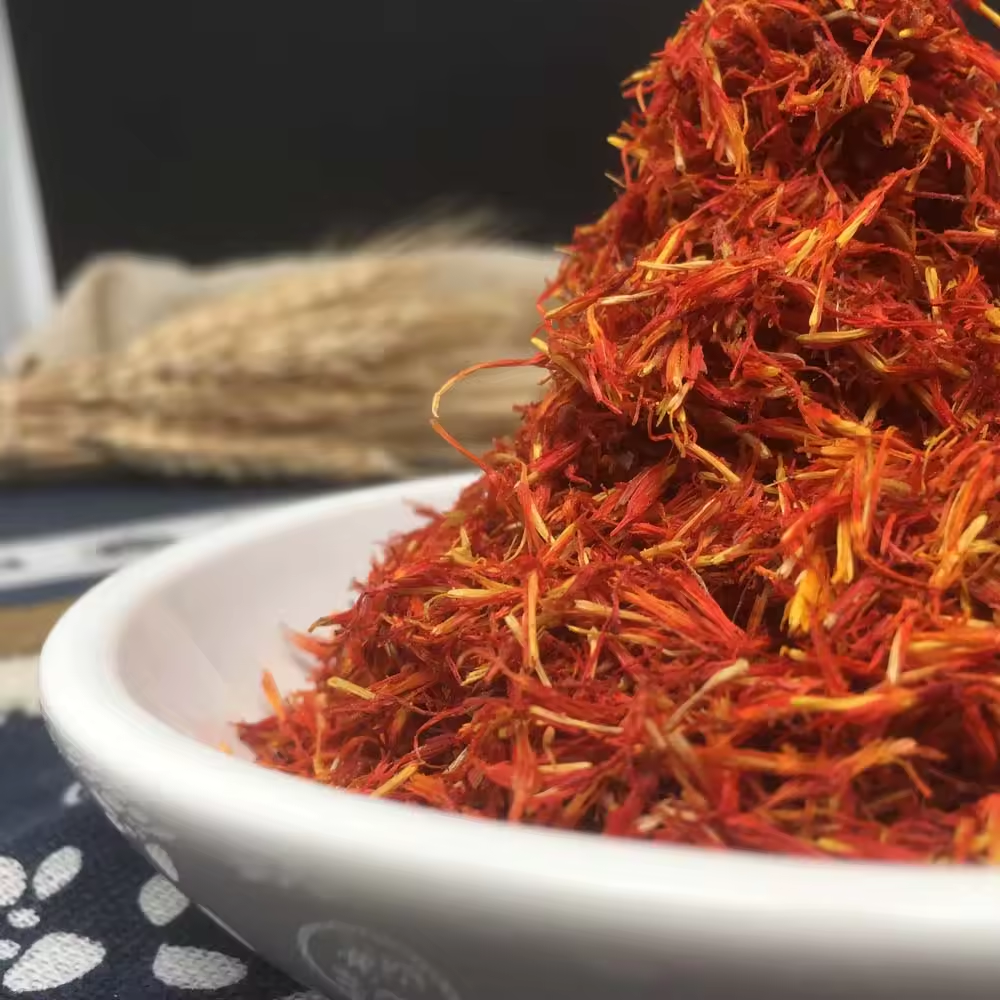
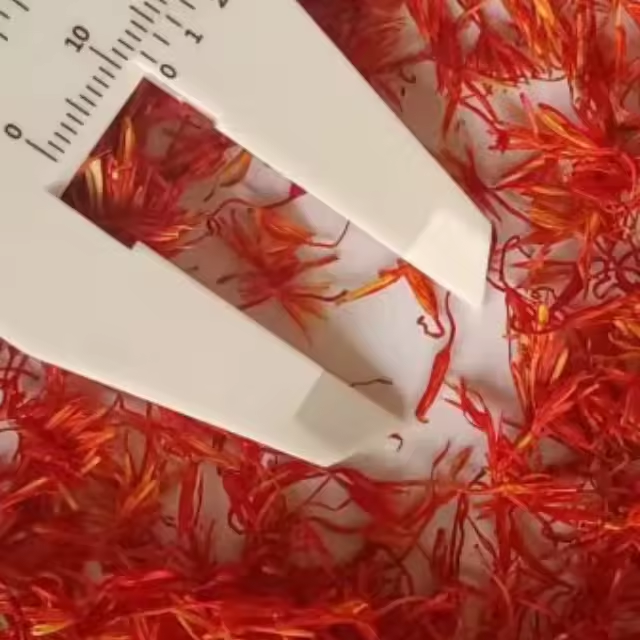


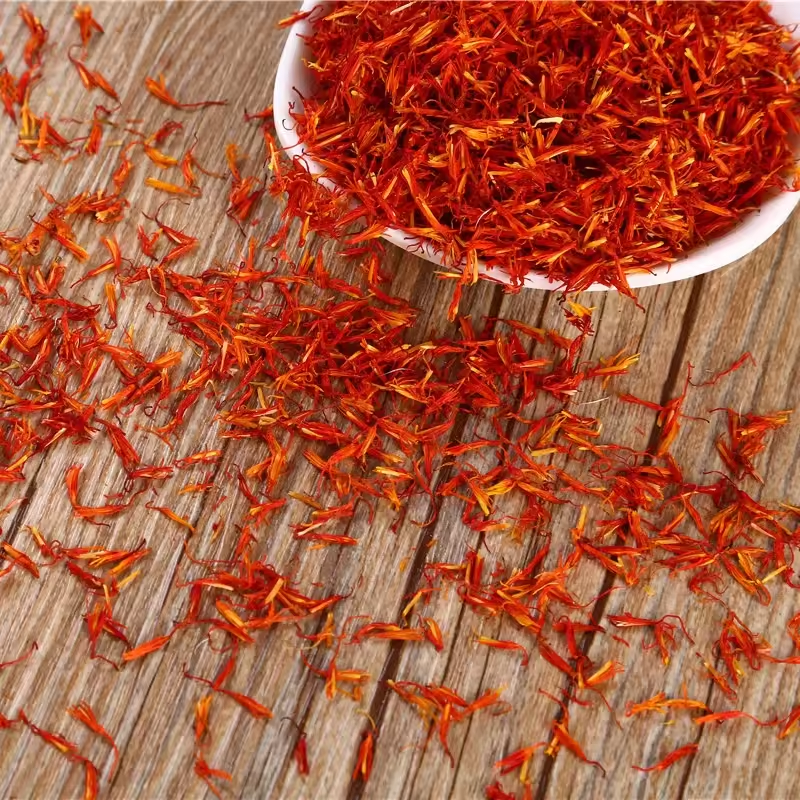
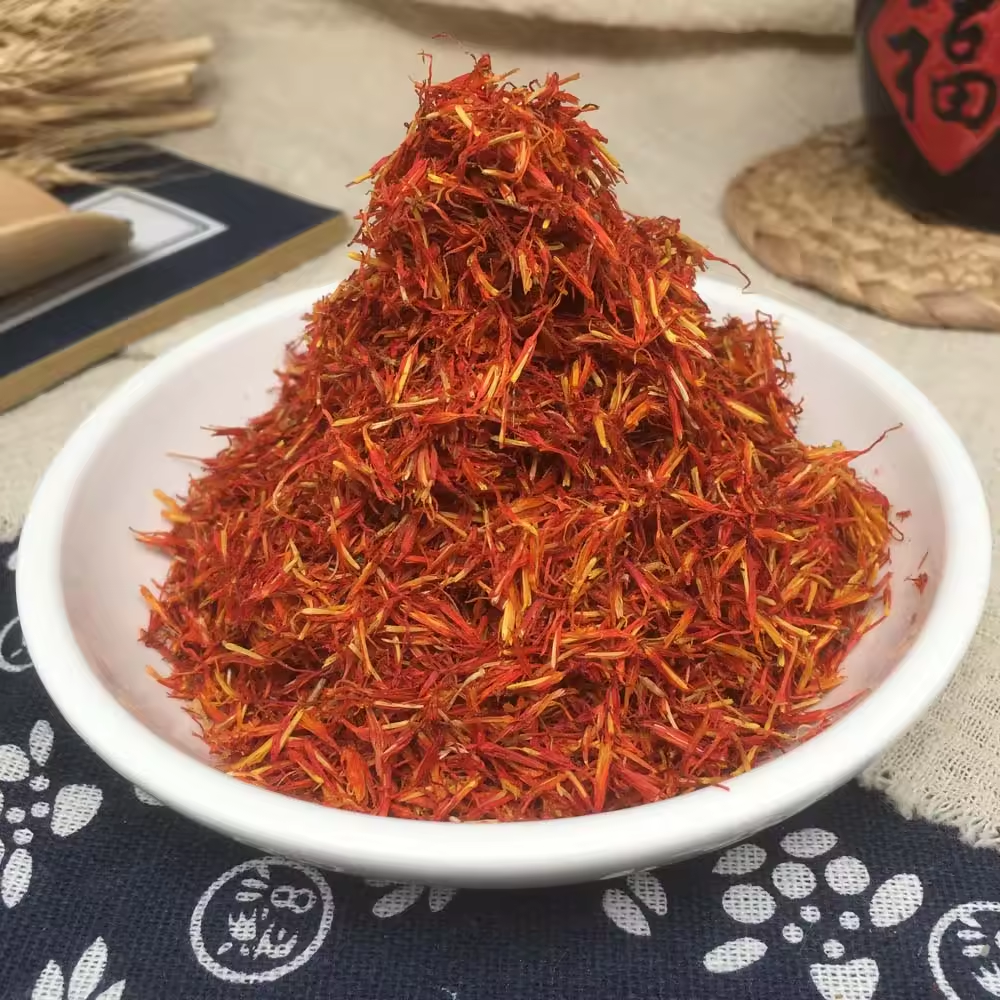


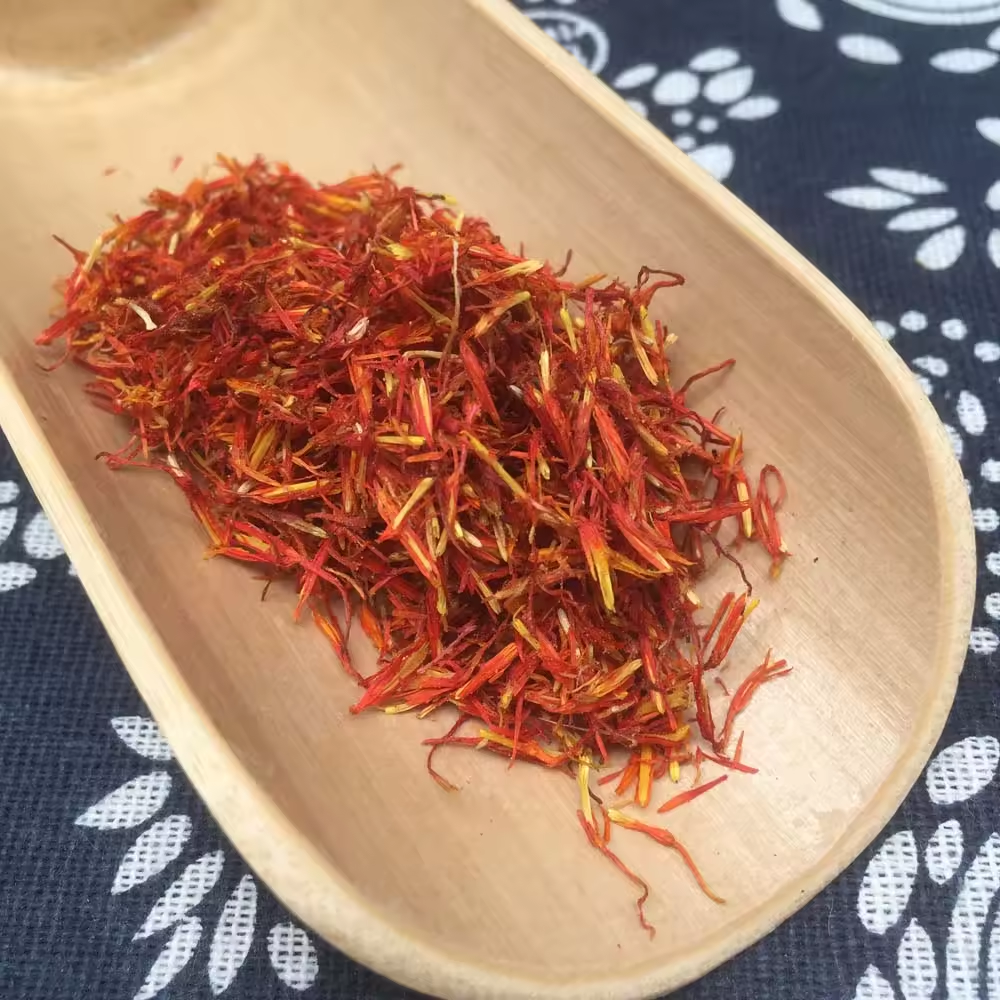
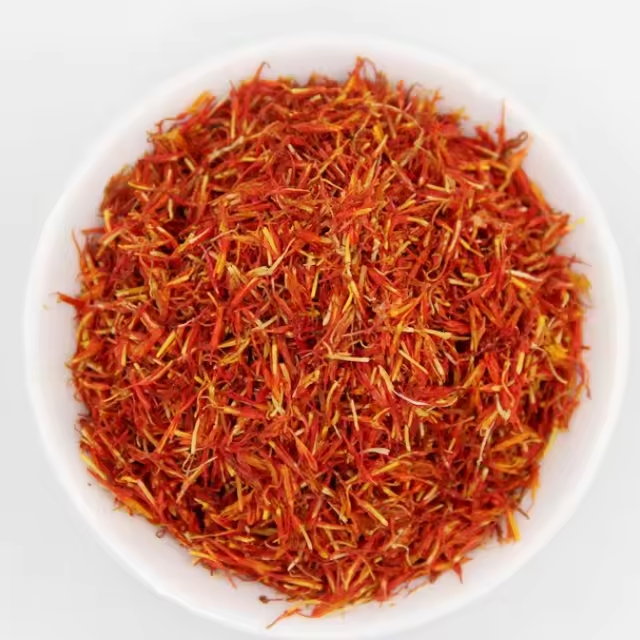
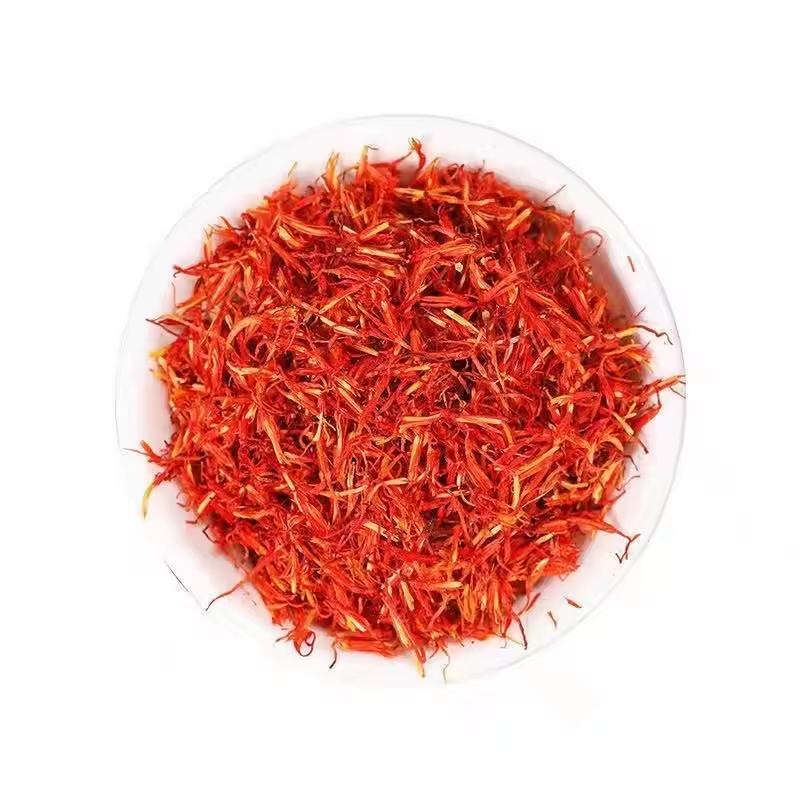
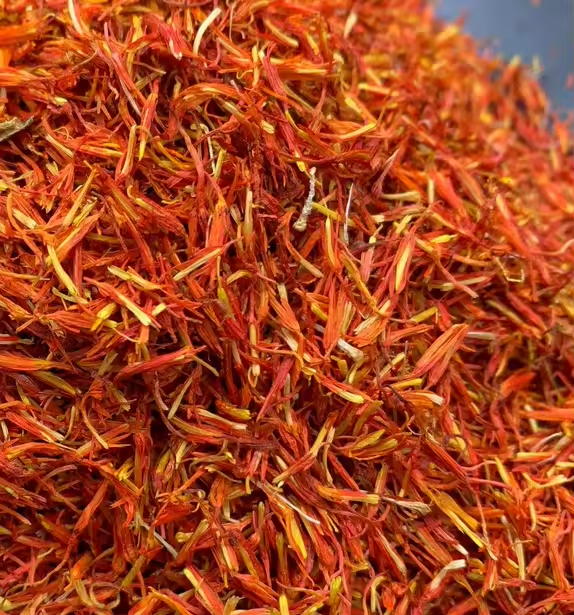


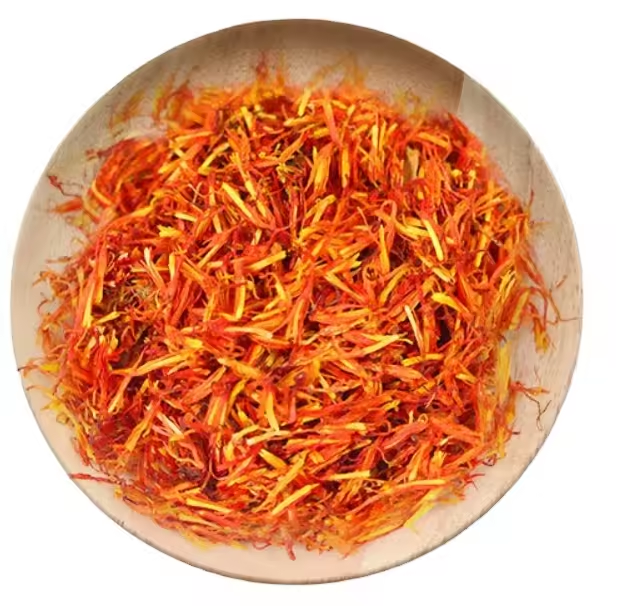
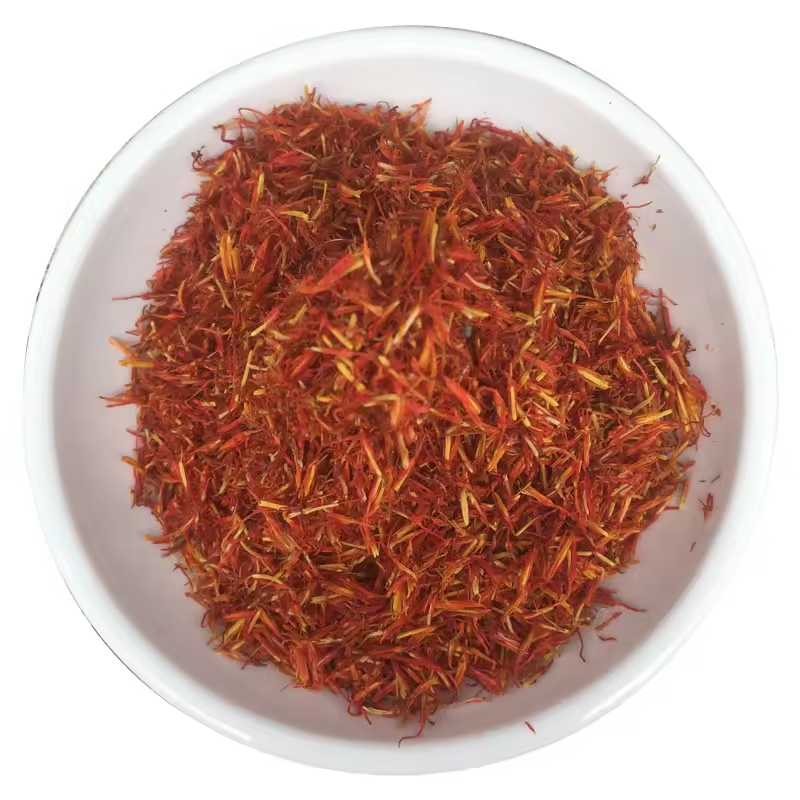
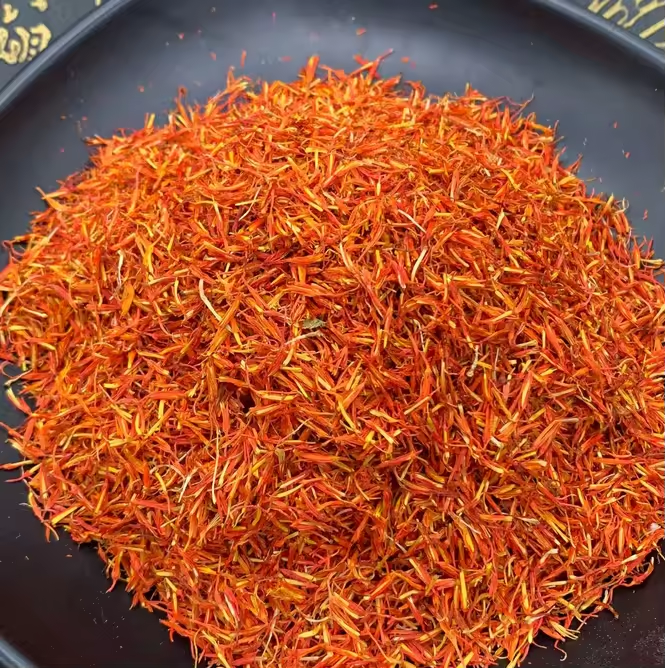
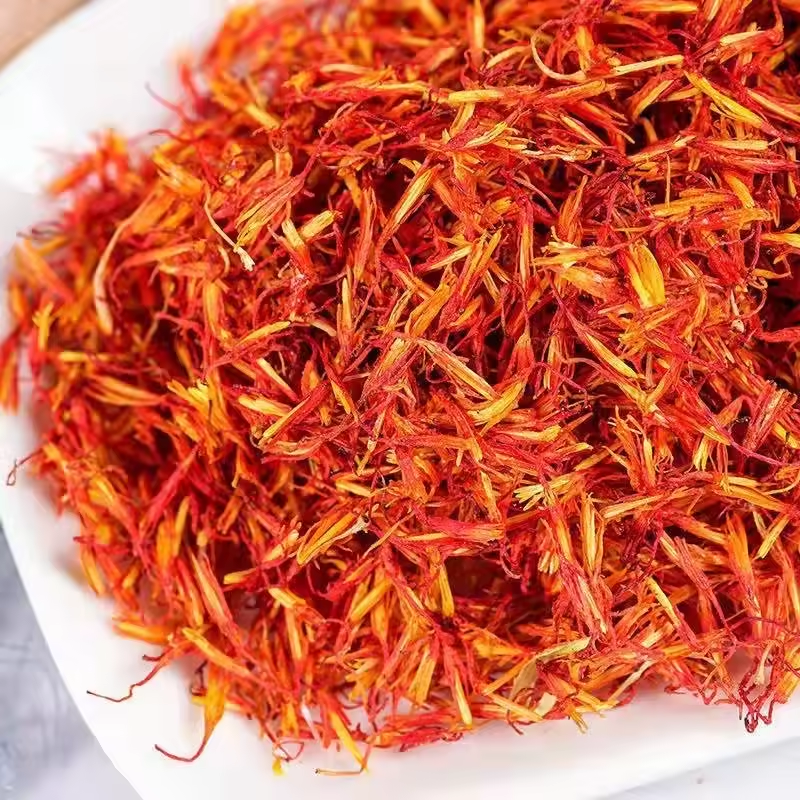
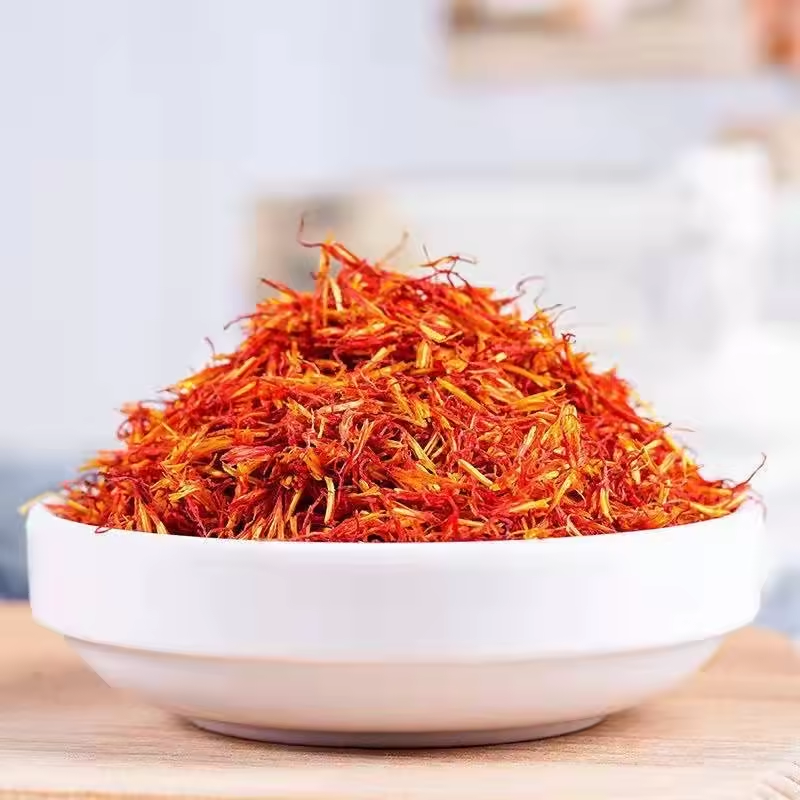

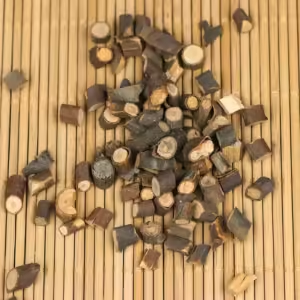
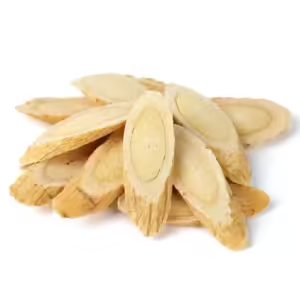
Recensioner
Det finns inga recensioner ännu.